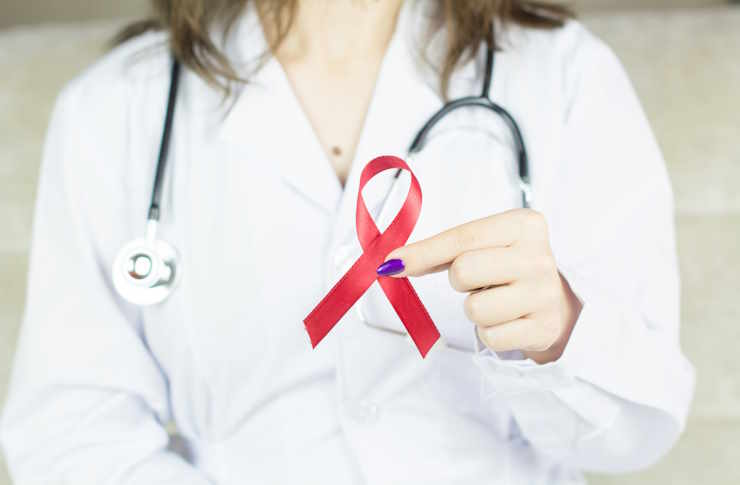Early HIV Symptoms: What to Watch For and When to Get Tested
HIV (Human Immunodeficiency Virus) is a virus that weakens the immune system, making the body more susceptible to infections and certain diseases. It’s crucial to understand that early signs of HIV can resemble other illnesses, which is why the only reliable way to know your status is to get tested.

How Can You Recognize Early HIV Symptoms?
Early HIV symptoms typically appear 2-4 weeks after initial infection during what’s called acute HIV syndrome or primary HIV infection. These symptoms occur as your immune system fights the virus, and they can vary significantly from person to person.
Common early symptoms include fever, often reaching 102°F or higher, accompanied by severe fatigue that doesn’t improve with rest. Many people experience a sore throat, swollen lymph nodes in the neck, armpits, or groin, and a distinctive skin rash that may appear as small, flat, or slightly raised lesions. Headaches, muscle aches, and joint pain are also frequently reported during this stage.
Gastrointestinal symptoms such as nausea, vomiting, and diarrhea may occur, along with night sweats that can be severe enough to soak bedsheets. Some individuals develop mouth ulcers or thrush, which appears as white patches in the mouth or throat.
It’s important to note that not everyone experiences these symptoms, and some people may have no symptoms at all during early infection. The absence of symptoms doesn’t mean you’re not infected, which is why testing based on risk factors rather than symptoms alone is crucial.
When Should You Get Tested for HIV?
HIV testing should be considered if you’ve engaged in activities that increase your risk of exposure. High-risk activities include unprotected sex with multiple partners, sharing needles or drug equipment, or having a sexual partner who is HIV-positive or has unknown HIV status.
The CDC recommends that everyone between ages 13-64 get tested for HIV at least once as part of routine healthcare. However, individuals at higher risk should be tested more frequently, potentially every 3-6 months.
If you’ve had a potential exposure, timing is critical. Most HIV tests can detect the virus 2-8 weeks after infection, depending on the type of test used. This period, called the “window period,” varies by test type. During this time, you may test negative even if you’re infected, so retesting may be necessary.
You should seek immediate testing if you experience the early symptoms mentioned above, especially if they occur within weeks of a potential exposure. Additionally, pregnant women should be tested as part of routine prenatal care, as early treatment can prevent mother-to-child transmission.
What Are the Different Stages of HIV and Their Symptoms?
HIV infection progresses through three distinct stages, each with characteristic symptoms and timeline. Understanding these stages helps explain why early detection is so important.
Stage 1 is acute HIV infection, occurring 2-4 weeks after exposure. This is when early symptoms are most likely to appear, and viral load is extremely high, making transmission more likely. Symptoms typically last 1-2 weeks and then disappear as the virus enters the next stage.
Stage 2 is chronic HIV infection, also called clinical latency. During this stage, the virus reproduces slowly, and many people have no symptoms or only mild ones. This stage can last 10-15 years with proper treatment, but without treatment, it progresses more quickly. Some people may experience persistent swollen lymph nodes during this phase.
Stage 3 is AIDS (Acquired Immunodeficiency Syndrome), which occurs when the immune system is severely damaged. Symptoms include rapid weight loss, recurring fever, extreme fatigue, prolonged swelling of lymph nodes, and opportunistic infections that healthy immune systems typically prevent. Without treatment, people with AIDS typically survive about three years.
Why Is Early HIV Detection Important?
Early HIV detection provides numerous health benefits and plays a crucial role in preventing transmission. When HIV is detected early, treatment can begin immediately, which helps preserve immune function and prevents progression to more advanced stages of infection.
Modern HIV medications, called antiretroviral therapy (ART), can reduce viral load to undetectable levels, meaning the virus cannot be transmitted to sexual partners. This concept, known as “undetectable equals untransmittable” or U=U, has revolutionized HIV prevention efforts.
Early treatment also prevents the development of opportunistic infections and reduces the risk of HIV-related complications. People who start treatment early can maintain near-normal life expectancy and quality of life.
From a public health perspective, early detection and treatment significantly reduce community transmission rates. When more people know their status and receive treatment, overall HIV incidence decreases.
What Are the Different Types of HIV Tests Available?
Several types of HIV tests are available, each with different detection windows and accuracy levels. Understanding these options helps you choose the most appropriate test for your situation.
Antibody tests detect antibodies your immune system makes in response to HIV infection. These tests can be performed on blood or oral fluid and typically detect HIV 3-12 weeks after infection. Rapid antibody tests can provide results in 20 minutes.
Antigen/antibody tests look for both HIV antibodies and p24 antigen, a protein produced by the virus. These combination tests can detect HIV 2-6 weeks after infection and are commonly used for routine screening.
Nucleic acid tests (NATs) detect the virus itself and can identify HIV 1-4 weeks after infection. These tests are more expensive and typically reserved for high-risk situations or when recent exposure is suspected.
Home testing options include FDA-approved self-test kits that provide privacy and convenience. These tests use oral fluid samples and provide results in about 20 minutes, though positive results require confirmation with laboratory testing.
HIV testing is widely available through healthcare providers, community health centers, and specialized testing sites. Many locations offer free or low-cost testing, and some provide same-day results. Testing is also available through local services in your area, including mobile testing units and community outreach programs.
Recognizing early HIV symptoms and understanding when to get tested are essential steps in maintaining your health and preventing transmission to others. If you suspect you may have been exposed to HIV or are experiencing symptoms consistent with early infection, don’t wait to seek testing and medical advice. Early detection and treatment can dramatically improve health outcomes and help prevent the spread of HIV in our communities.
This article is for informational purposes only and should not be considered medical advice. Please consult a qualified healthcare professional for personalized guidance and treatment.




